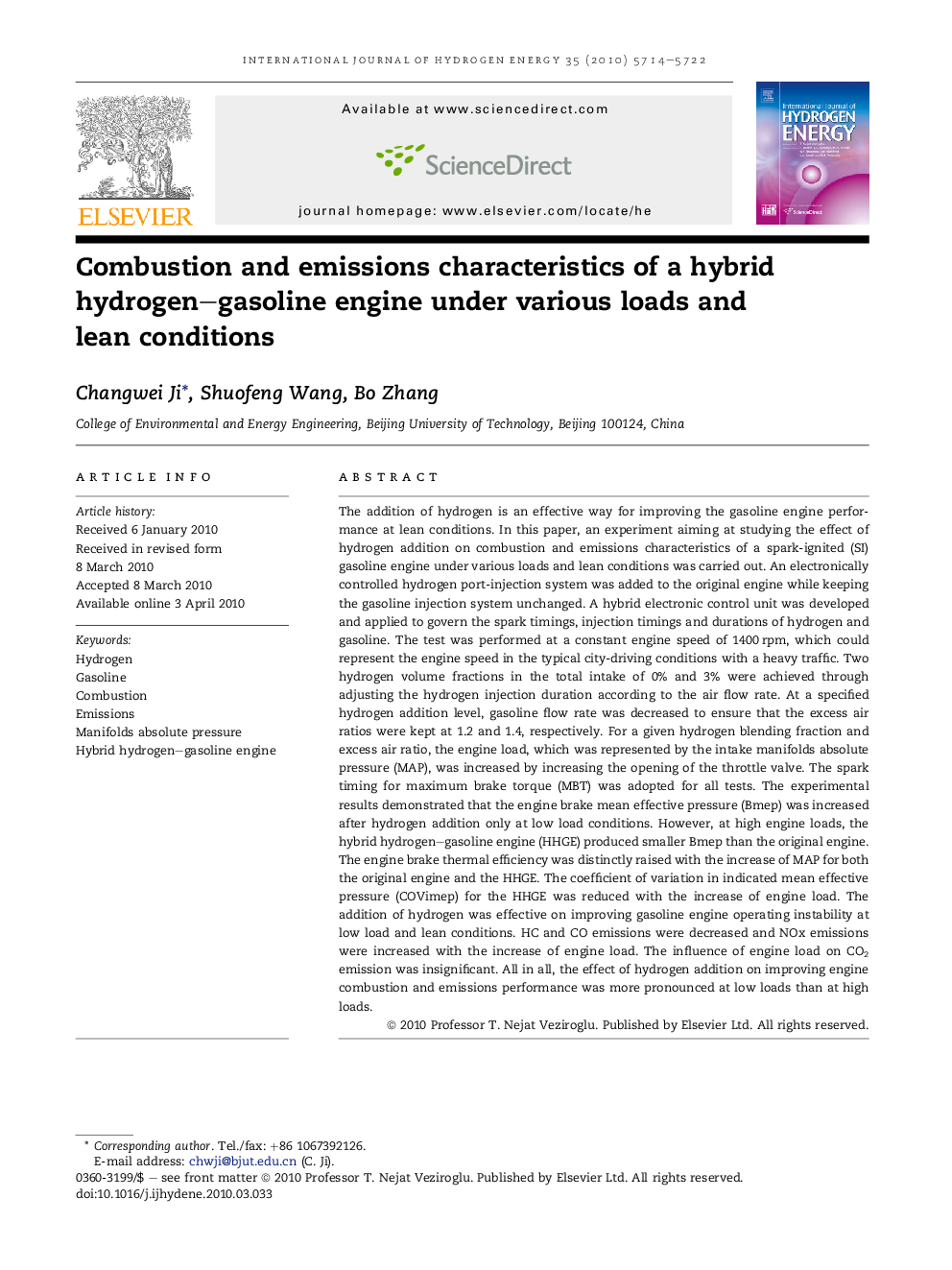| کد مقاله | کد نشریه | سال انتشار | مقاله انگلیسی | نسخه تمام متن |
|---|---|---|---|---|
| 1280595 | 1497606 | 2010 | 9 صفحه PDF | دانلود رایگان |

The addition of hydrogen is an effective way for improving the gasoline engine performance at lean conditions. In this paper, an experiment aiming at studying the effect of hydrogen addition on combustion and emissions characteristics of a spark-ignited (SI) gasoline engine under various loads and lean conditions was carried out. An electronically controlled hydrogen port-injection system was added to the original engine while keeping the gasoline injection system unchanged. A hybrid electronic control unit was developed and applied to govern the spark timings, injection timings and durations of hydrogen and gasoline. The test was performed at a constant engine speed of 1400 rpm, which could represent the engine speed in the typical city-driving conditions with a heavy traffic. Two hydrogen volume fractions in the total intake of 0% and 3% were achieved through adjusting the hydrogen injection duration according to the air flow rate. At a specified hydrogen addition level, gasoline flow rate was decreased to ensure that the excess air ratios were kept at 1.2 and 1.4, respectively. For a given hydrogen blending fraction and excess air ratio, the engine load, which was represented by the intake manifolds absolute pressure (MAP), was increased by increasing the opening of the throttle valve. The spark timing for maximum brake torque (MBT) was adopted for all tests. The experimental results demonstrated that the engine brake mean effective pressure (Bmep) was increased after hydrogen addition only at low load conditions. However, at high engine loads, the hybrid hydrogen–gasoline engine (HHGE) produced smaller Bmep than the original engine. The engine brake thermal efficiency was distinctly raised with the increase of MAP for both the original engine and the HHGE. The coefficient of variation in indicated mean effective pressure (COVimep) for the HHGE was reduced with the increase of engine load. The addition of hydrogen was effective on improving gasoline engine operating instability at low load and lean conditions. HC and CO emissions were decreased and NOx emissions were increased with the increase of engine load. The influence of engine load on CO2 emission was insignificant. All in all, the effect of hydrogen addition on improving engine combustion and emissions performance was more pronounced at low loads than at high loads.
Journal: International Journal of Hydrogen Energy - Volume 35, Issue 11, June 2010, Pages 5714–5722